“I did a bad thing” I responded to my partner as they asked me what’s in the newly delivered parcel I received last Saturday morning. I really wasn’t going to buy any more stuff, at least not until I put some items on Ebay first. I should at least attempt to only spend what I get from the sale of the gear I don’t use enough to justify keeping it. Yet there it was, a brown box wrapped in fragile printed tape. An impulse purchase inspired by a conversation I had in the comments of one of the several vintage lens groups I belong to on Facebook.
Infrared would pique my interest every once in a while. I tried it a bit, mostly with my Ricoh GR and a mini tripod. But I really hate using a tripod and, while long exposures bring their own particular charm to IR photography, I’m more of a wander around, take spontaneous hand-held photos, come home with a batch of 250 shots kind of photographer. IR-converted low end DSLRs used to be the only option if you were on a budget, however all but two of my lenses fit rangefinders and that would mean investing in some extra glass that would only really be useful for this camera body. I also got badly used to some very small cameras and lenses.
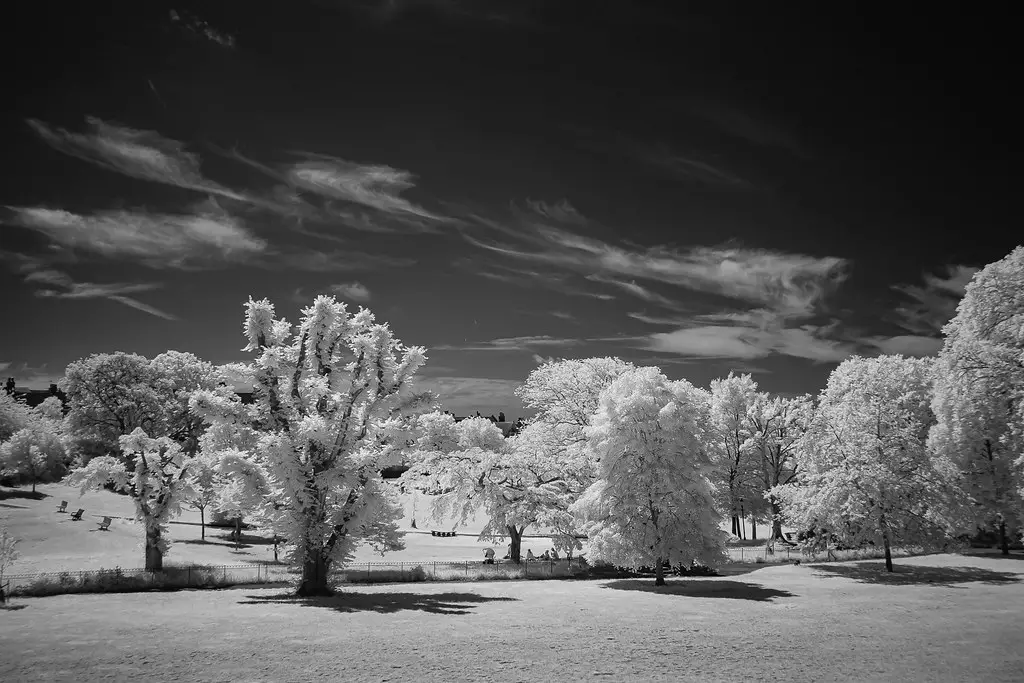
Mirrorless has always invoked mixed feelings in me, mainly because of the electronic viewfinder. In 2022 the EVFs aren’t nearly as bad as they used to be (fine, I might even call them decent) but they are still EVFs. But if I were to get an old mirrorless camera converted to IR I would no doubt need to set my expectations very VERY low in this regard. Unless..? What if I abandoned the temptation to invest in a full frame body and instead got myself a decade-old Fujifilm camera with a hybrid optical/electronic finder? I never tried one but of course I know better than to expect a rangefinder-class experience. However, an optical window to look through with framelines was going to be perfectly sufficient.
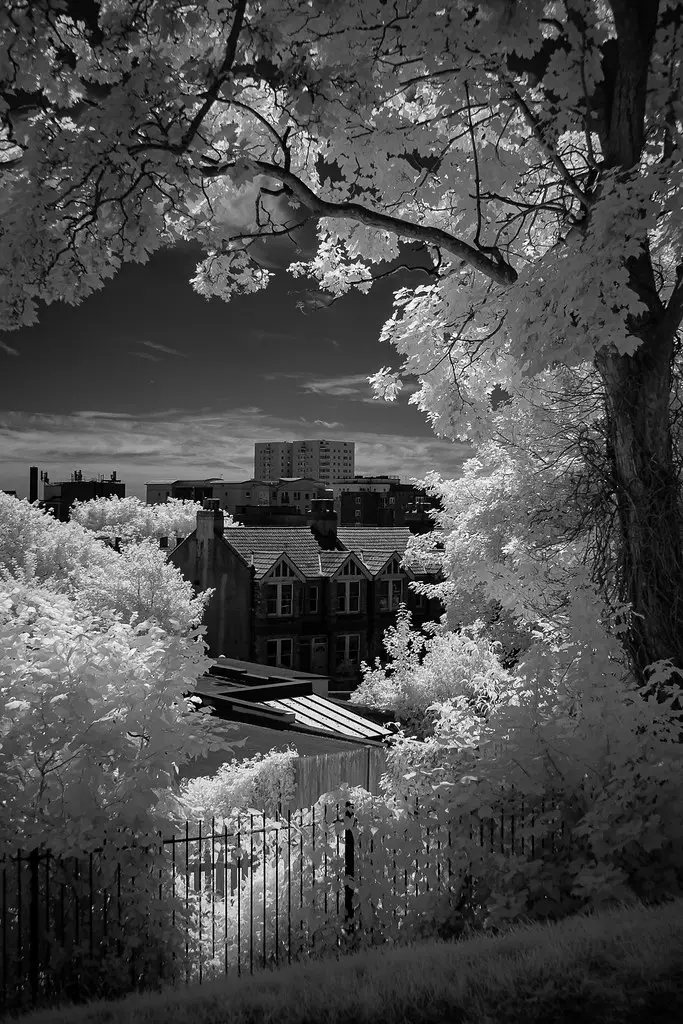
What began to take shape in my mind was basically a digital infrared Rollei 35. This meant using zone focus and relying on whatever lens I decide to use having the IR marking on the focus ring. This all seemed doable, especially since I was going to be using a relatively wide lens stopped down. But no matter how convinced you are that something will work the way you imagine, the reality might not meet your expectations. I found a listing for an X-Pro1 converted to 850nm (generally considered to be much less practical than 720nm but I had my heart set on doing black and white only and suspected false colour, as nice as it sometimes looks in other people’s photos, was going to become tiresome very soon) and began to pester the very patient seller with questions (cheers Tim!).
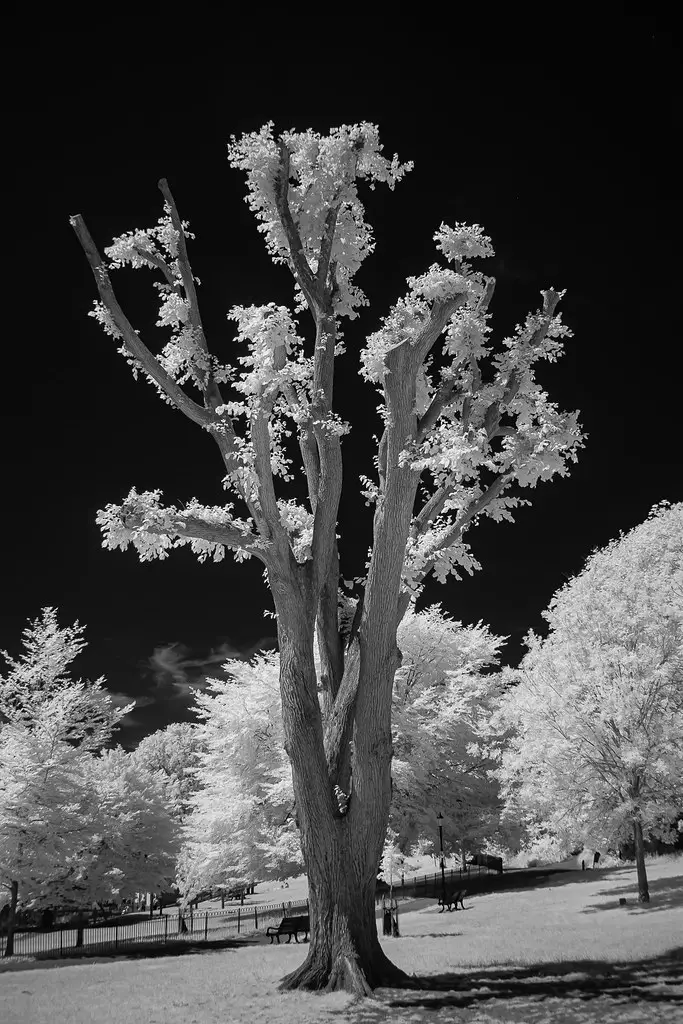
What I needed to make sure was that I could use it hand-held, and it looked like I was going to be able to shoot at a very comfortable 1/125s at ISO 400 and with the lens stopped down to f/8. A bit of arm pulling (tempting me with a price decrease) later compounded with an extra 10% off courtesy of Ebay made me take the leap. Not leaving much time for buyer’s remorse to set in, the camera arrived less than 24 hours later. First thought: very similar size to the Leica M but significantly lighter, as well as a surprisingly nice optical finder window. Second thought: why can’t I take a photo?? Right, going to have to read a bit of the manual. Soon enough I realised I needed to set the camera to work without a lens as well as switch off the back display in order to take full advantage of the OVF/EVF combo.
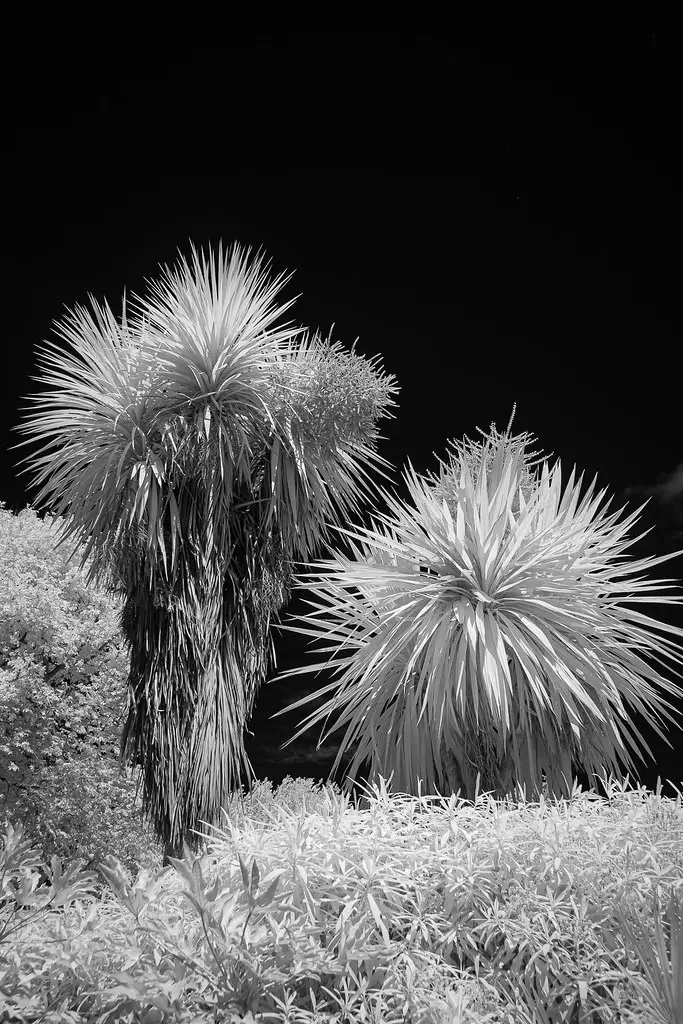
The OVF has adjustable framelines (corresponding to the most common focal lengths), offers wide and normal magnification, and even features a teeny tiny histogram. Shame you can’t see any of it when shooting outdoors. I might have to use the EVF after all… But wait, looks like the edges of the optical finder at normal magnification almost exactly match the field of view of a 25mm lens, which was already my prime candidate to mount on this camera as it’s my smallest – the W-Nikkor.C 2.5cm f/4. That was an amazingly reassuring discovery for me. As soon as I could, which was the next day, I took my new toy out for a walk around Queen’s Park.
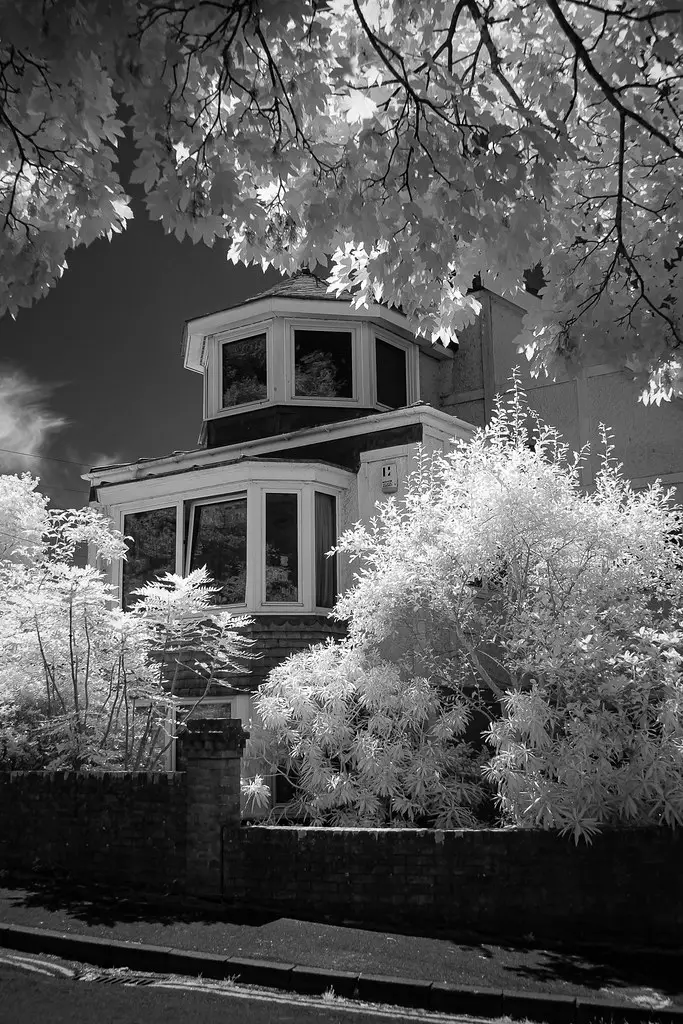
The weather was perfect for infrared, sunny with small scattered clouds. The OVF was in fact behaving exactly like I expected – required a small shift left and up to correct for parallax (or left and down if you shoot in portrait orientation) but otherwise matched the focal length pretty precisely. I could still sort of read the histogram if I covered the corner of the finder window with my finger. I might just put a piece of gaffer tape where the histogram is or leave it as-is. If I need to frame with more precision, with one flick of the lever I can switch between optical and electronic finder. The EVF isn’t particularly helpful in determining correct exposure when it’s very bright outside so that tiny histogram is very useful. If you choose to use automatic exposure, it appears to be reliable and precise, even in infrared. When zone focusing, I set the lens to 25ft using the IR marking and that proved to be good enough for most situations.
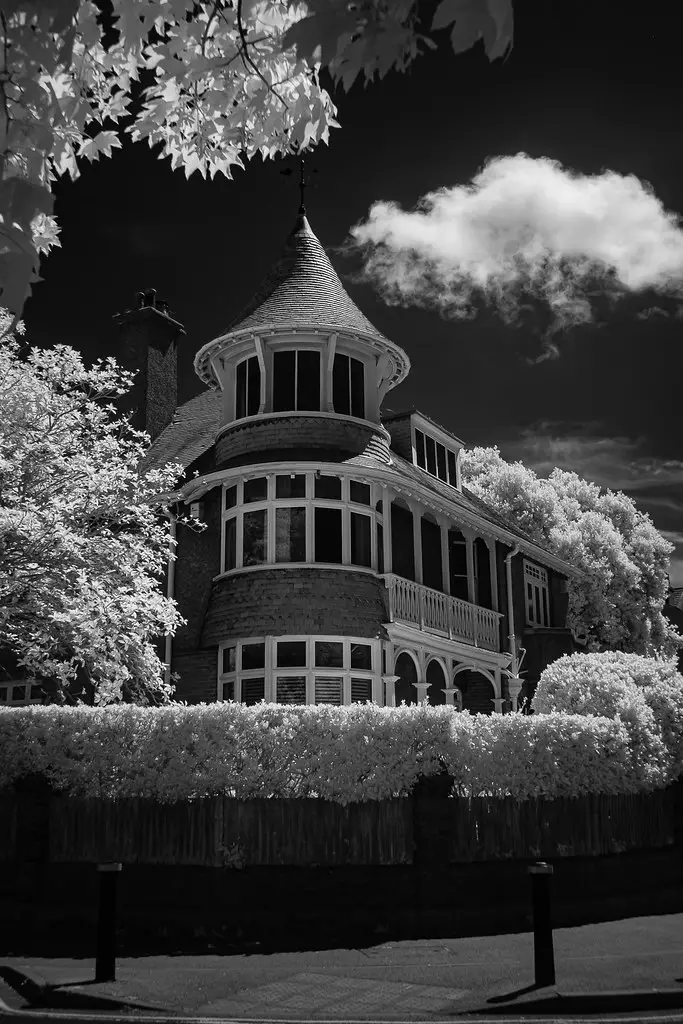
It’s tricky when you have to make a bunch of assumptions prior to the purchase because nobody covered this particular scenario, or you spend time watching videos on how this camera works with vintage lenses that don’t go at all into how to best set up your camera to get the most out of them (I’m looking at you, curly moustache dude) or the limitations of working with a low resolution EVF and an OVF you can’t read the settings in. What surprises me is how anyone would have enough patience to use a vintage lens on this camera body, especially anything normal to long and faster than f/8. The peaking only comes in white (not a very useful colour under the best conditions, for IR it’s no help at all as you may imagine). The resolution of the EVF is low, as is the level of magnification you can apply to photos you took to check them for sharpness (better if you shoot RAW+JPG but for shooting RAW only it’s pretty much useless for anything other than checking the framing). On the go and in bright sunlight you basically just have to hope for the best. Perhaps these are only a pain on an IR-converted camera but I can’t imagine this being a lot better originally. Apologies to more advanced users of this camera if I’m doing it a disservice here due to my very limited experience with it and potentially not running the latest firmware.
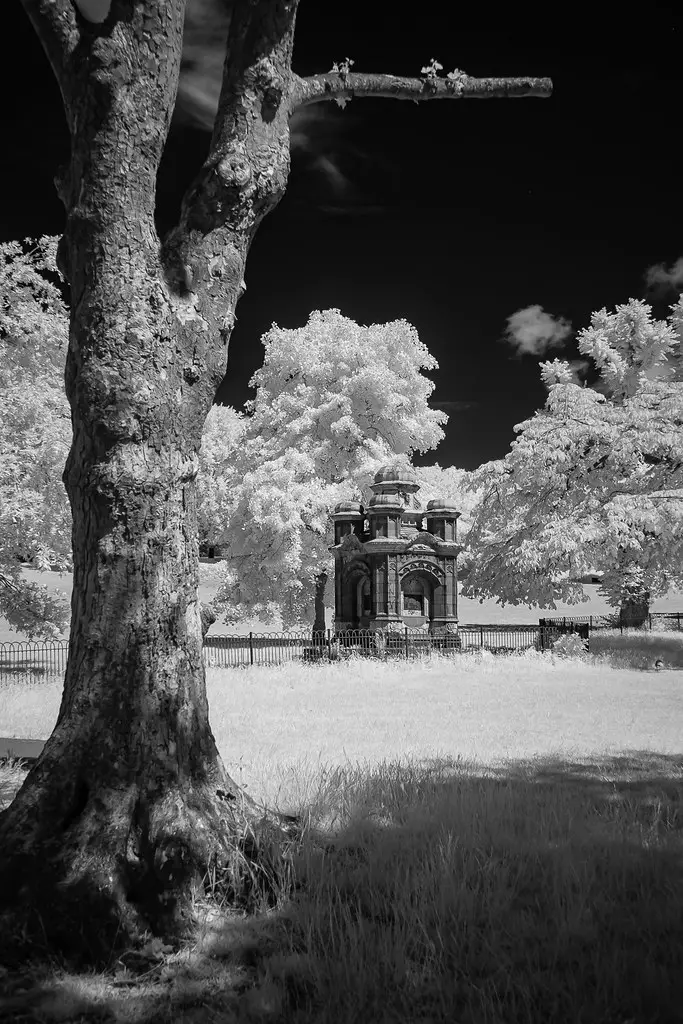
I have avoided mirrorless for many years (basically until this year) and getting a little acquainted with them (I also have a modern Sigma FP) just makes me appreciate the good old Leica even more. Give me a large bright OVF any day over all the shooting aids such as focus peaking or magnifying a portion of the image. Furthermore, give me a camera I don’t need to read the manual for in order to start shooting right away. But don’t let all this complaining fool you, I am quite charmed by the humble decade-old X-Pro1. It feels like a serious camera, and I do really think it very much resembles the Rollei 35. It’s restrictive but in a good way. The emphasis here is placed on the photography essentials rather than on aids and gimmicks. It’s snappy, the lag is minimal, and best of all having shot close to 300 images today using the OVF primarily (but not exclusively), on what I can only assume is a decade-old battery, it still shows all the bars. Beat that, any camera with an EVF.
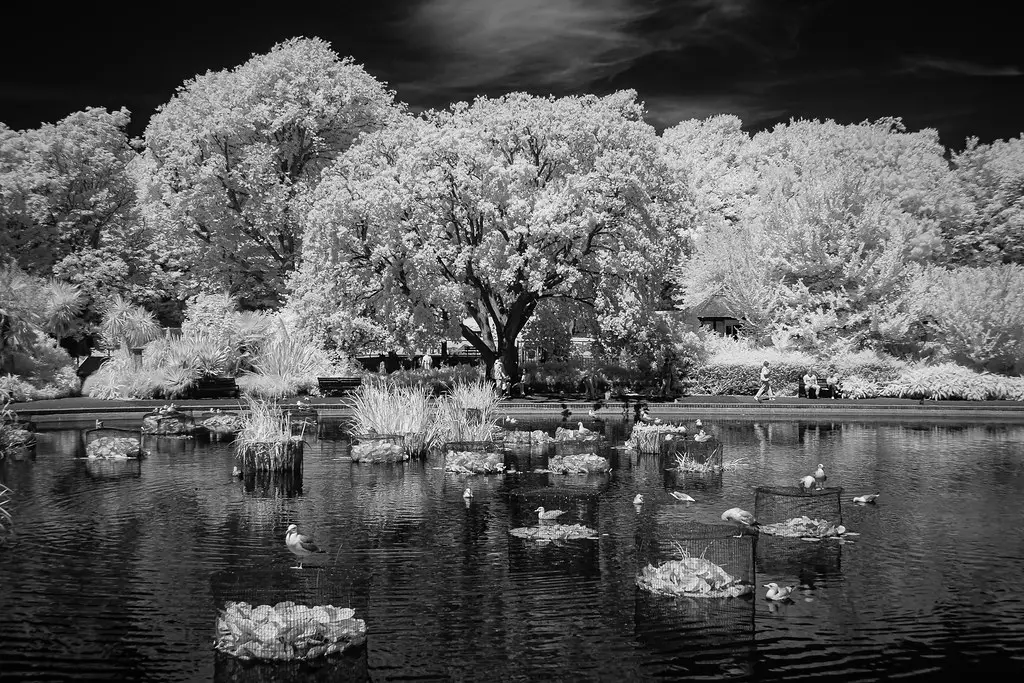
The image quality is impressive too for an ageing 16MP crop sensor. It offers decent detail and is quite forgiving when over- or under-exposing. While I was shooting, I noticed a bit of a glow around bright subjects on a dark background, luckily this was only occurring in-camera, later in Lightroom they all looked fine. The camera doesn’t produce the level of clarity or crispness my Monochrom does, and the performance of my old lens seems poorer on the sides of the image even despite the crop, but it cost me less than 10% of the price and it allows me to finally try proper infrared (might be fun to compare infrared with shooting with my favourite red filter). In all fairness, the sharpness issues and corner performance might have more to do with the infrared conversion than with the camera itself. The Fujifilm X-Pro1 will definitely be going in my bag a lot when I head out.
All photos taken with Fujifilm X-Pro1 converted to 850nm infrared and W-Nikkor.C 2.5cm f/4 (Topogon).
Share this post:
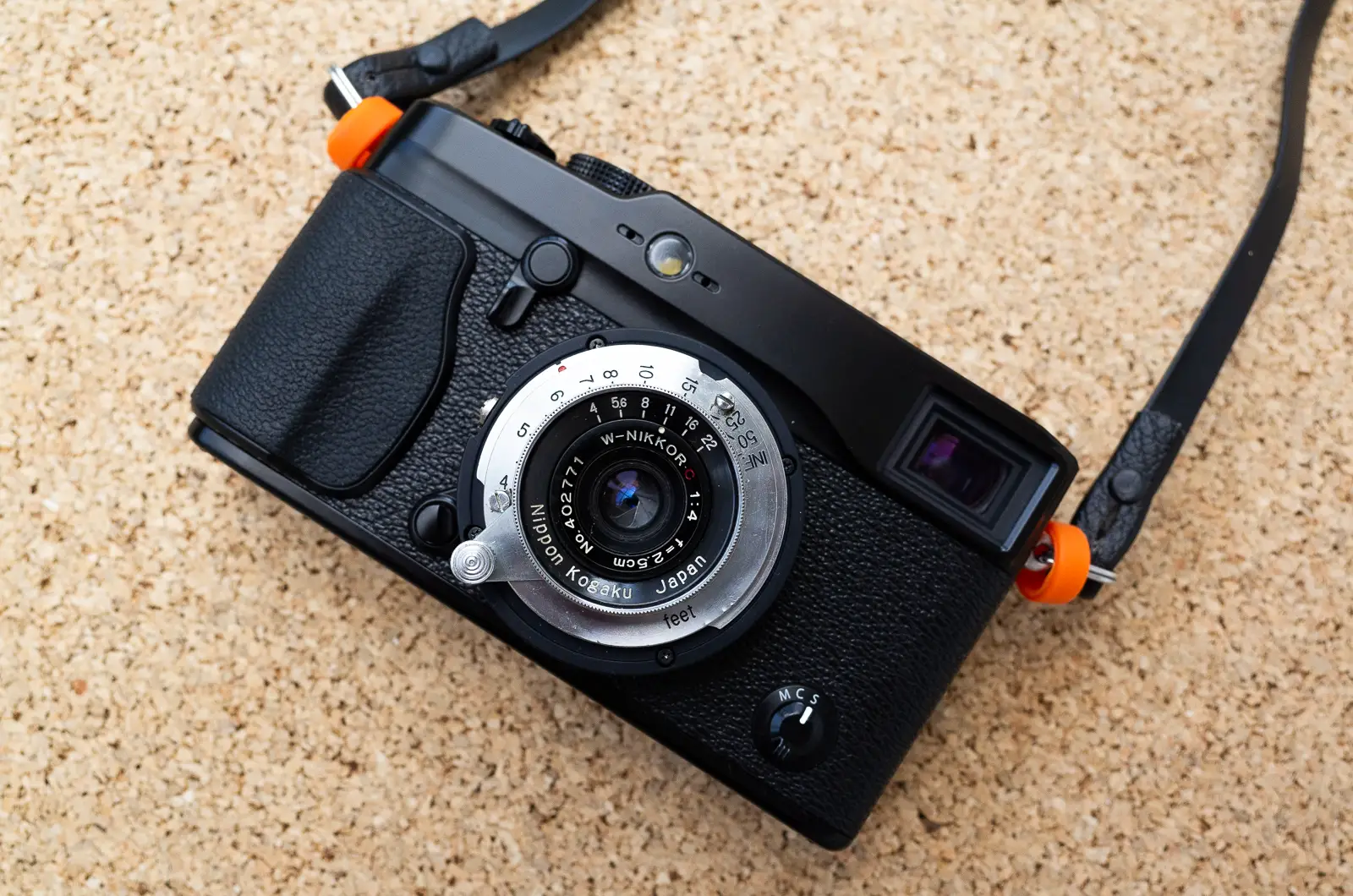








Comments
Richard de Bulat on Fujifilm X-Pro1 – Digital Infrared Zone Focus Viewfinder Camera – First Outing – by Agata Urbaniak
Comment posted: 22/07/2022
Don Goodman-Wilson on Fujifilm X-Pro1 – Digital Infrared Zone Focus Viewfinder Camera – First Outing – by Agata Urbaniak
Comment posted: 22/07/2022
The X-Pro 3 overcomes many of the limitations you ran into, but of course this knowledge doesn’t help your current situation: very bright OVF display, focus peaking in six colors and two levels of sensitivity, much improved EVF. FWIW.
Comment posted: 22/07/2022
Vlad Serebryany on Fujifilm X-Pro1 – Digital Infrared Zone Focus Viewfinder Camera – First Outing – by Agata Urbaniak
Comment posted: 23/07/2022
Comment posted: 23/07/2022
Carl Moss on Fujifilm X-Pro1 – Digital Infrared Zone Focus Viewfinder Camera – First Outing – by Agata Urbaniak
Comment posted: 23/07/2022
For IR photography the best camera I know is a Leica M10 Monochrom, again unmodified. I typically use a 715nm filter and I'm very pleased with the results.
James Lewis on Fujifilm X-Pro1 – Digital Infrared Zone Focus Viewfinder Camera – First Outing – by Agata Urbaniak
Comment posted: 24/07/2022
Comment posted: 24/07/2022
Comment posted: 24/07/2022
Comment posted: 24/07/2022
Eric on Fujifilm X-Pro1 – Digital Infrared Zone Focus Viewfinder Camera – First Outing – by Agata Urbaniak
Comment posted: 05/08/2022